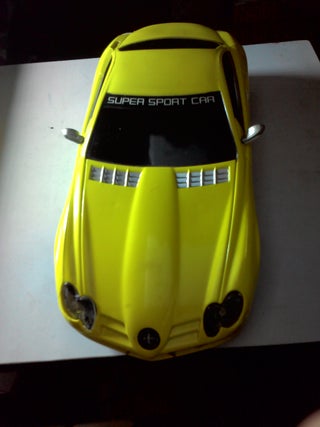But that describes the communication via a terminal program (serial connection). If the sensor is connected to a serial port, you must use serial communication rather than network functions. See Serial Communications on how to do this. As already noted in solution 1 and described in the manual, STX and ETX refer to special characters. GitHub Gist: instantly share code, notes, and snippets. I am trying to control a Panasonic Projector via the serial port on a Global Cache GC-100. The Projector commands all start with an STX and end with ETX such as: sTXPONETX I have the network resource configured as tcp and port 5000 and tried several different Modes but not have worked: C-Esca. I tend to use this when reading from Arduino serial ports for instance: byte buffer = new bytesp.BytesToRead; sp.Read(buffer, 0, buffer.Length); You could also spin the reading off into its own thread that just read bytes until it has a full line before queuing that for handling by the main thread. Most likely overkill for your application.
Description
Used for communication between the Arduino board and a computer or other devices. All Arduino boards have at least one serial port (also known as a UART or USART), and some have several.
| Board | USB CDC name | Serial pins | Serial1 pins | Serial2 pins | Serial3 pins |
|---|---|---|---|---|---|
Uno, Nano, Mini | 0(RX), 1(TX) | ||||
Mega | 0(RX), 1(TX) | 19(RX), 18(TX) | 17(RX), 16(TX) | 15(RX), 14(TX) | |
Leonardo, Micro, Yún | Serial | 0(RX), 1(TX) | |||
Uno WiFi Rev.2 | Connected to USB | 0(RX), 1(TX) | Connected to NINA | ||
MKR boards | Serial | 13(RX), 14(TX) | |||
Zero | SerialUSB (Native USB Port only) | Connected to Programming Port | 0(RX), 1(TX) | ||
Due | SerialUSB (Native USB Port only) | 0(RX), 1(TX) | 19(RX), 18(TX) | 17(RX), 16(TX) | 15(RX), 14(TX) |
101 | Serial | 0(RX), 1(TX) |
On Uno, Nano, Mini, and Mega, pins 0 and 1 are used for communication with the computer. Connecting anything to these pins can interfere with that communication, including causing failed uploads to the board.
You can use the Arduino environment’s built-in serial monitor to communicate with an Arduino board. Click the serial monitor button in the toolbar and select the same baud rate used in the call to begin().
Serial communication on pins TX/RX uses TTL logic levels (5V or 3.3V depending on the board). Don’t connect these pins directly to an RS232 serial port; they operate at +/- 12V and can damage your Arduino board.
To use these extra serial ports to communicate with your personal computer, you will need an additional USB-to-serial adaptor, as they are not connected to the Mega’s USB-to-serial adaptor. To use them to communicate with an external TTL serial device, connect the TX pin to your device’s RX pin, the RX to your device’s TX pin, and the ground of your Mega to your device’s ground.
Description
Prints data to the serial port as human-readable ASCII text. This command can take many forms. Numbers are printed using an ASCII character for each digit. Floats are similarly printed as ASCII digits, defaulting to two decimal places. Bytes are sent as a single character. Characters and strings are sent as is. For example-
Serial.print(78)gives '78'Serial.print(1.23456)gives '1.23'Serial.print('N')gives 'N'Serial.print('Hello world.')gives 'Hello world.'
An optional second parameter specifies the base (format) to use; permitted values are BIN(binary, or base 2), OCT(octal, or base 8), DEC(decimal, or base 10), HEX(hexadecimal, or base 16). For floating point numbers, this parameter specifies the number of decimal places to use. For example-

Serial.print(78, BIN)gives '1001110'Serial.print(78, OCT)gives '116'Serial.print(78, DEC)gives '78'Serial.print(78, HEX)gives '4E'Serial.print(1.23456, 0)gives '1'Serial.print(1.23456, 2)gives '1.23'Serial.print(1.23456, 4)gives '1.2345'
You can pass flash-memory based strings to Serial.print() by wrapping them with F(). For example:
Stx Etx Protocol

To send data without conversion to its representation as characters, use Serial.write().
Syntax
Parameters
Arduino Serial Stx Etx For Sale
Serial: serial port object. See the list of available serial ports for each board on the Serial main page.val: the value to print. Allowed data types: any data type.
Arduino Serial Stx Etx Driver
Returns
print() returns the number of bytes written, though reading that number is optional. Data type: size_t.
